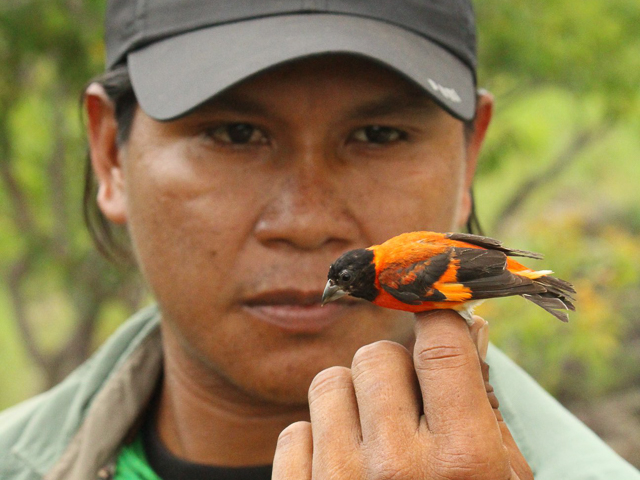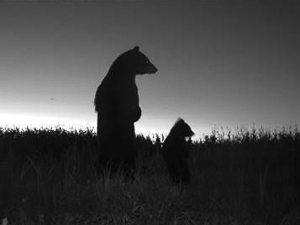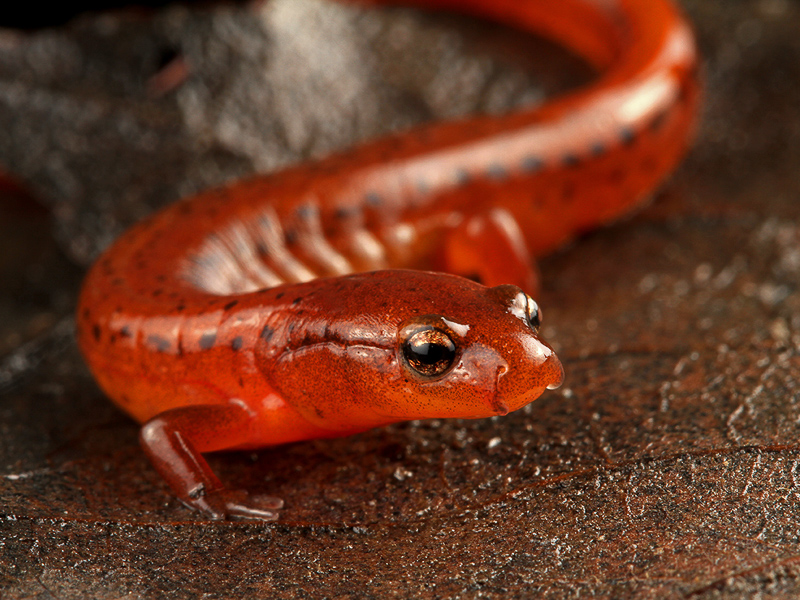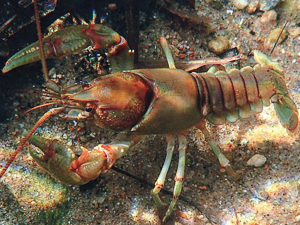
Connecting the spots for conservation of diminutive Key deer
March 10, 2021
A Key deer fawn approaches a camera trap. Click to enlarge. Did you know that the spots on deer fawns are unique to each individual, just like our own fingerprints are uniquely ours? Researchers from the North Carolina Museum of Natural Sciences, North Carolina State University and the University of Florida recently used this characteristic… Read More >

NCMNS Ornithology Unit awarded National Geographic grant for conservation of endangered Red Siskin
March 4, 2021
A Senior Ranger with a male Red Siskin. Photo: Meshach Pierre. NCMNS Collections Manager for Ornithology Brian O’Shea and the South Rupununi Conservation Society (SRCS) have been awarded a National Geographic Species Recovery grant ($44,447) to continue their work on the (IUCN Endangered) Red Siskin (Spinus cucullatus) in Guyana. Their project, “Implementing a Community-based Conservation… Read More >

Candid Critters: Lessons learned from a statewide citizen science project
Citizen Science projects using camera traps produce high quality data but are hard to manage at a large scale. How do you get equipment to volunteers? Train them? Get the data back? See how Roland Kays, head of the NC Museum of Natural Sciences’ Biodiversity Lab, and colleagues met these challenges in a new paper… Read More >

Carolina Sandhills salamander discovery featured in Walter Magazine
March 3, 2021
Carolina Sandhills Salamander (Eurycea arenicola) in life, from North Carolina. Photo: Todd Pusser. Click to enlarge. “I thought it was just an oddball,” says Alvin Braswell of the unusual red salamander he first saw in 1969. At the time, he was the assistant curator for lower invertebrates at the North Carolina Museum of Natural Sciences…. Read More >

Blue, Red & Spiny All Over
On a warm October day in 1984, Vince Schneider waded through the Jacob Fork River in South Mountains State Park — his attention captured by a bright red hue darting across the riverbed. Intrigued, Schneider, a curator of paleontology at the North Carolina Museum of Natural Sciences, caught up with the clawed creature and plucked… Read More >

